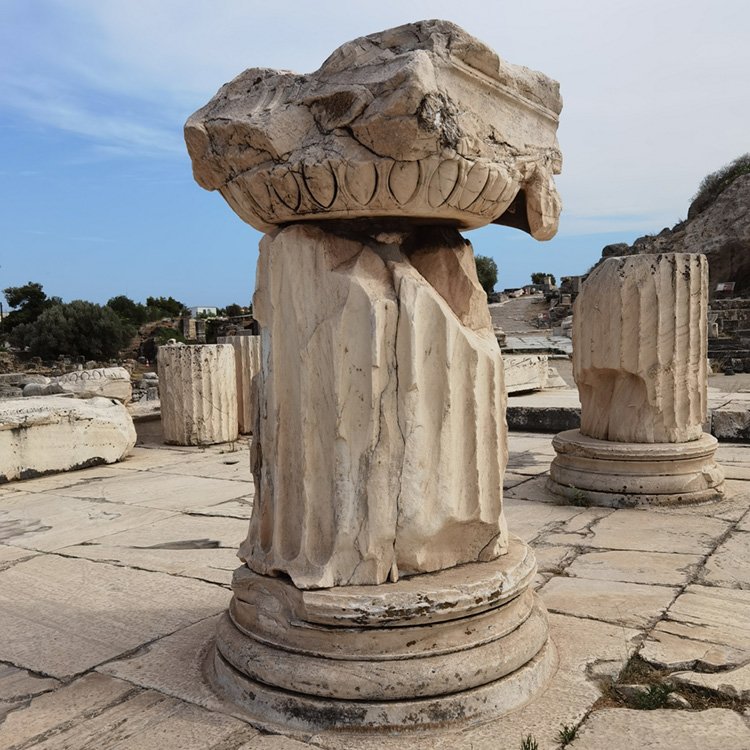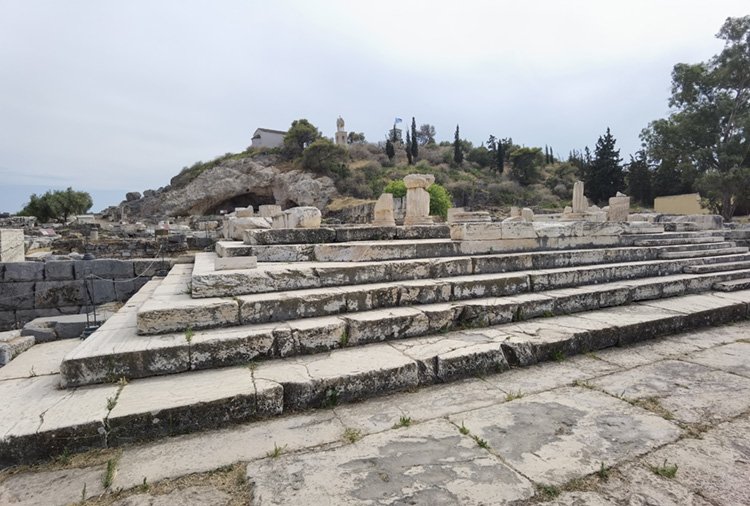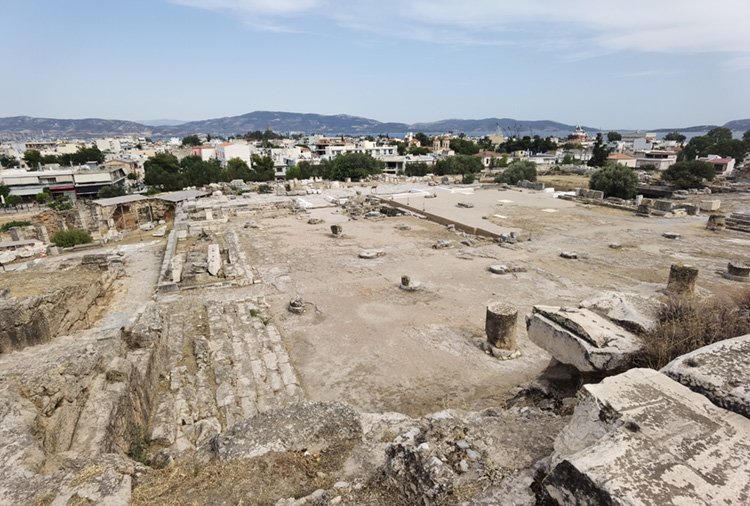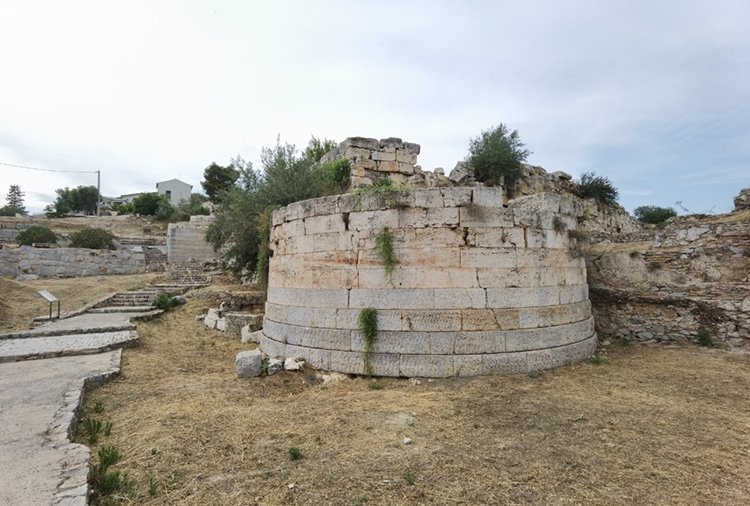A tour in the archaeological site of Eleusis
If you like Ancient Greece then you must pay a visit to western Athens and specifically to the archaeological site of Eleusis.

Here is the sanctuary of Demeter and her daughter Persephone, which was one of the most important in antiquity, the Great Mysteries of the Eleusinian Mysteries were taking place here. The sanctuary got the care of Greeks and Roman emperors, initiated into the mysteries were the emperors Marcus Aurelius and Hadrian.
The antiquities come from different historical periods reaching up to the Roman period. The tour begins in the roman court which has always been the entrance to the sanctuary. Iera Odos (the Sacred street) that connected Athens with Eleusis ended there. It is paved with large marble slabs while on the left and right there were two triumphal arches built by the emperors, similar to Hadrian's Arch in Athens.
The procession of the mystics was arriving on foot from Athens and at Kallihoron Well the mystics were dancing with torches. There I saw a sculpture with two torches crossing each other so I understood that some ritual was taking place there.
The Greater Propylaea remind the ancient grandeur. It was built in roman period together with the Lesser Propylaea. According to the inscription in Latin they were dedicated to Demeter and Persephone by the Roman consul Appius Claudius Pulchro in 54 BC. Next to that is the Ploutonion, two shallow caves in front of which there was a temple of Pluton.

The Greater Propylaea, the cave of Ploutonion and high on the hill Panagia Mesosporitissa church
At the Telesterion were performed the rites of the Great Mysteries but due to the vow of silence of the initiates it is unknown what was happening there. The ruins come mainly from the Telesterion of classical period (5th century BC). The last building was built in the years of the emperor Marcus Aurelius (161 - 180 AD) when the previous one was destroyed by the Kostovoks a people of northern origin in 170 AD.

The Telesterion and view of the city of Eleusis
Around the Telesterion is the Sacred Court, the gathering place of the faithful. From the stairs I went up to the Upper Court where I gazed at the entire archaeological site. Next is the post-Byzantine church of Panagia Mesosporitissa. There was also a religious custom that had to do with the goddess Demeter. The church celebrates on November 21, in the middle of sowing. The faithful were holding polyspora (boiled cereals and pulses) which the Virgin Mary blesses for good good harvest. In this way the ancient worship passed into Christianity.
This is followed by a visit to the museum which is divided into two sections, "The city around the sanctuary" and the "Great Mysteries". Although small a great work has been done. The last room gives the experience of the Telesterion and it is like entering the abode of the Mysteries and experiencing the act of initiation. In low light sacramental sounds are heard while the lights form something like a shape-changing cloud on the wall. There is a slab from the Hierophant's throne inscribed ΙΕΡΟΦΑΝΤ, the high priest of the cult of Demeter. The most impressive exhibit of the museum is the large-scale Caryatid of Eleusis.
The meaning of the Mysteries is reconciliation with death and the expectation of an afterlife. The goddess Demeter becomes the first among the immortal gods to become aware of death when Hades seizes her daughter Persephone and drags her to the Underworld. Demeter in her lamentation leaves Olympus and stops all vegetation and flowering on earth. Only then Zeus is mobilized and orders his brother Hades to release Persephone.
Read more: Did Persephone's abduction take place in Ermioni?
Persephone's ascent to the upper world can be paralleled with the Lord's Resurrection. Dodecatheism believed that death is the end of everything, but in the Eleusinian Mysteries the initiates gained hope for an afterlife, which is why they were so important in the ancient world.

The southern pillar on the Lycurgian wall
The tour continues to the walls which are worth walking. It was built in different phases and each one bears the name of the politician who built it: Peisistrateio, Kimoneio, Pericleio, Lycourgeio.
While walking there are lots of signs around explaining what you see. Of course during my visit there was not a soul, maybe because it is outside of Athens and does not get the attention it deserves. The tour takes over an hour.
Near the entrance it is worth visiting the early Christian basilica of Agios Zacharias from the 5th - early 6th century AD built mainly with ancient material. It was located on the ancient Sacred Street.
The sanctuary functioned until 392 AD when by decree of Theodosius all ancient sanctuaries were closed, while in 395 AD it was finally destroyed by the Visigoths.
The ticket price is:
| Full | 6 € |
| Reduced | 3 € |
Free entrance March 6, April 18, May 18, the last weekend of September, October 28.
Working hours:
| Period | Hours |
|---|---|
| November - March | 8:30 - 15:30 |
| April - August | 8:00 - 20:00 |
| September 1 - September 15 | 8:00 - 19:30 |
| September 16 - September 30 | 8:00 - 19:00 |
| October 1 - October 15 | 8:00 - 18:30 |
| October 16 - October 31 | 8:00 - 18:00 |
| Good Friday: 12.00 - 17.00, Good Saturday: 8:30 - 15:30 | |
Every Tuesday closed.
Closed January 1, March 25, May 1, Easter Sunday, December 25, December 26.







